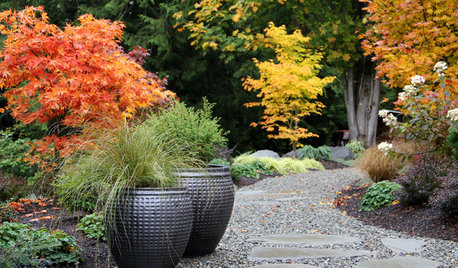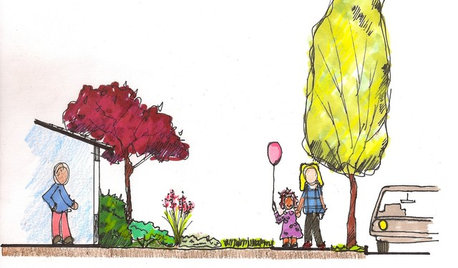Twisted benjamina growing
osakawebbie
16 years ago
Related Stories

CONTEMPORARY HOMESHouzz Tour: Old-School Charm With a Contemporary Twist
Bright and open interiors with a serene vibe belie the challenges of building this Cornwall home
Full Story
PLANTING IDEASGreat Garden Combo: Fall Foliage With a Contemporary Twist
This fiery autumnal display relies on simplicity and ample spacing to create a distinctive panorama
Full Story
HOUZZ TOURSMy Houzz: Old-World Charm With a Modern-Love Twist
Heritage pieces combine with custom touches — and one great story — in a Canadian family's 'forever' house
Full Story
BATHROOM DESIGNBath of the Week: Black, White and Classic, With Some Twists
Black trim and tile keep an otherwise snowy bathroom in a 1910 home from feeling sleepy
Full Story
COLORMarch Into Year-Round Chic With 15 Twists on Red, White and Blue
Parade your patriotism and your style sophistication with new looks for a classic color trio. Drumroll, please ...
Full Story
BLUETwist on Tradition: Blue and White Porcelain
9 ways to show off these lovely pieces all over the house
Full Story
LANDSCAPE DESIGNGive Curb Appeal a Self-Serving Twist
Suit yourself with a front-yard design that pleases those inside the house as much as viewers from the street
Full Story
DECORATING GUIDESMacrame Is Back, With a Modern Twist
This textile art form, both decorative and functional, was popular long before the funky ’70s
Full Story
EDIBLE GARDENSWhy Grow Quince? For Beauty, Fragrance and Old-Time Flavor
Delightfully perfumed fruit and lovely spring blossoms make this apple and pear cousin worth a spot in the garden
Full Story
HOUSEPLANTS10 Top Plants to Grow Indoors
Brighten a room and clean the air with a houseplant that cascades artfully, stretches toward the ceiling or looks great on a wall
Full Story



tapla (mid-Michigan, USDA z5b-6a)
osakawebbieOriginal Author
Related Discussions
HUGE Ficus Benjamina help
Q
Need advice on my Ficus Benjamina.
Q
Encouraging Ficus Benjamina to grow vines?
Q
Growing Twist & Shout in Zone 5 garden
Q
effdeevee
tapla (mid-Michigan, USDA z5b-6a)
osakawebbieOriginal Author
tapla (mid-Michigan, USDA z5b-6a)
osakawebbieOriginal Author
tapla (mid-Michigan, USDA z5b-6a)
osakawebbieOriginal Author
tapla (mid-Michigan, USDA z5b-6a)